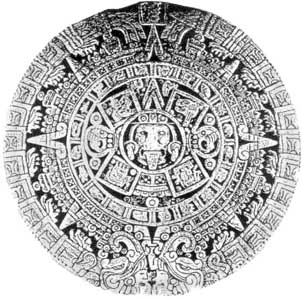| The Calendar Round is the term anthropologists use for the larger cycle of time in pre-hispanic Mexico. Like most people throughout human history, the Mexica did not have a single linear calendar with a fixed beginning date to time all events. Instead, they supported multiple calendars: counts of the phases of the moon and the planet venus, a solar calendar that also served to mark the seasons and time the agricultural year, and a ritual calendar used for divination, notably at birth, whose length may have been an approximation of the period of human pregnancy. All of these calendrical counts proceeded at the same time. Absolute dating could be achieved by characterizing a particular time period and counting from that: for example, events could be placed in the reign of a particular ruler. But for most of Mesoamerican history, a combination of the solar and divinatory calendars was used to create a 52-year-long calendar. The solar calendar, fixed by the number of days that elapsed between the same point in the sun's movement on the horizon, was of course set at 365 days. The divinatory calendar was 260 days long. When the two calendars started on the same day, it took 52 years for them again to reach their beginning dates on the same day to start a new cycle
|
 |
